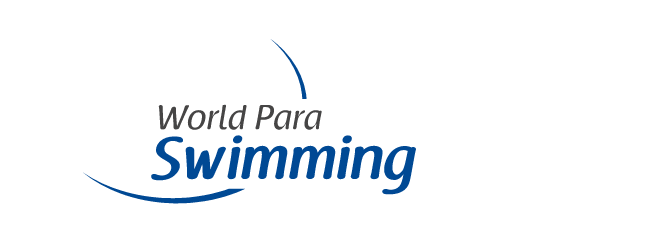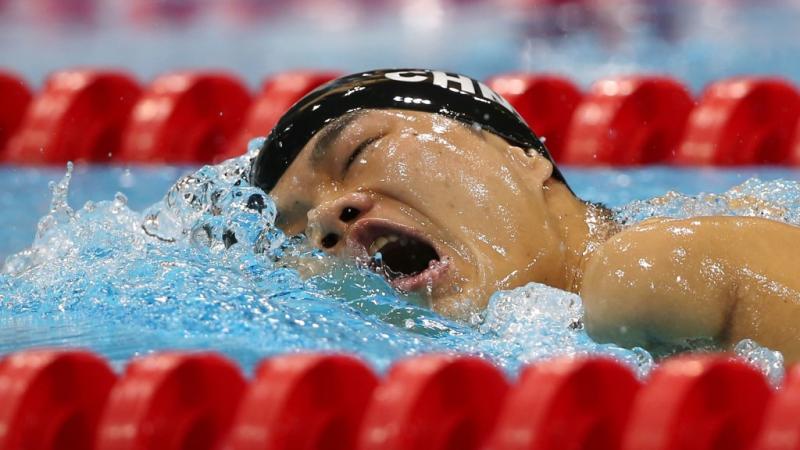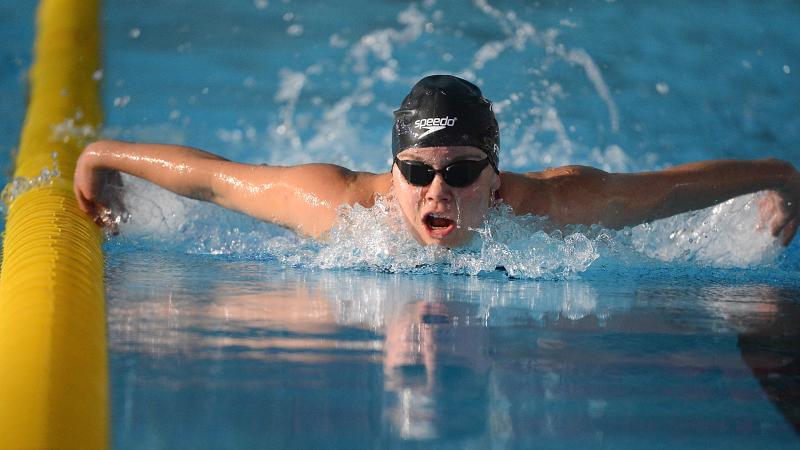PARA SWIMMING CLASSIFICATION
This is a brief overview of classification in the sport and is in no way legally binding. In all cases the sport-specific classification rules will take precedence. For further questions please contact info@worldparaswimming.org
WHAT IS CLASSIFICATION?
In order to safeguard the integrity of fair competition, all Para sports have a system in place which aims to ensure that winning is determined by sporting factors such as skill, fitness, power, endurance, tactical ability and mental focus, the same factors that account for success in sport for able bodied athletes.
This system is called classification.
Through classification, it is determined which athletes are eligible to compete in a sport and how those athletes are then grouped together for competition, in order to minimise the impact of those athletes’ impairments on sport performance.
Classification is sport-specific because an impairment affects the ability to perform in different sports to a different extent. As a consequence, an athlete may meet the criteria to compete in one sport, but may not meet the criteria in another sport. Having an impairment is thus not sufficient for an athlete to compete in Para sport.
The groupings of athletes by the degree of activity limitation resulting from their impairments are called ‘Sport Classes’. This, to a certain extent, is similar to grouping athletes by age, gender or weight.
Classification across the Paralympic Movement is governed by the IPC Athlete Classification Code and Standards. More information about classification can be found here.
CLASSIFICATION IN PARA SWIMMING
The details of classification in Para swimming are set out in the World Para Swimming Classification Rules and Regulations (link provided below).
To be eligible to compete in Para swimming, a person must have an eligible impairment and meet the minimum impairment criteria set out in the World Para Swimming Classification Rules and Regulations.
Eligible Impairments for Para Swimming
World Para Swimming caters for three impairment groups - physical, intellectual and vision impairment. There are 10 eligible impairment types in Para swimming:
|
Examples of Heath Conditions |
|
|
Athletes with Impaired Muscle Power have a Health Condition that either reduces or eliminates their ability to voluntarily contract their muscles in order to move or to generate force. |
Examples of an Underlying Health Condition that can lead to Impaired Muscle Power include spinal cord injury (complete or incomplete, tetra-or paraplegia or paraparesis), muscular dystrophy, post-polio syndrome and spina bifida. |
|
Athletes with Limb Deficiency have total or partial absence of bones or joints. |
Examples of an Underlying Health Condition that can lead to Limb Deficiency include: traumatic amputation, illness (for example amputation due to bone cancer) or congenital limb deficiency (for example dysmelia). |
|
Athletes with Leg Length Difference have a difference in the length of their legs. |
Examples of an Underlying Health Condition that can lead to Leg Length Difference include: dysmelia and congenital or traumatic disturbance of limb growth. |
|
Athletes with Short Stature will have a reduced length in the bones of the upper limbs, lower limbs and/or trunk. |
Examples of an Underlying Health Condition that can lead to Short Stature include achondroplasia, growth hormone dysfunction, and osteogenesis imperfecta. |
|
Athletes with hypertonia have an increase in muscle tension and a reduced ability of a muscle to stretch caused by damage to the central nervous system. |
Examples of an Underlying Health Condition that can lead to Hypertonia include cerebral palsy, traumatic brain injury and stroke. |
|
Athletes with Ataxia have uncoordinated movements caused by damage to the central nervous system. |
Examples of an Underlying Health Condition that can lead to Ataxia include: cerebral palsy, traumatic brain injury, stroke and multiple sclerosis. |
|
Athletes with Athetosis have continual slow involuntary movements. |
Examples of an Underlying Health Condition that can lead to Athetosis include cerebral palsy, traumatic brain injury and stroke. |
|
Impaired Passive Range of Movement Athletes with Impaired Passive Range of Movement have a restriction or a lack of passive movement in one or more joints. |
Examples of an Underlying Health Condition that can lead to Impaired Passive Range of Movement include arthrogryposis and contracture resulting from chronic joint immobilisation or trauma affecting a joint. |
|
Athletes with vision impairment have reduced or no vision caused by damage to the eye structure, optical nerves or optical pathways, or visual cortex of the brain. |
Examples of an Underlying Health Condition that can lead to Vision Impairment include retinitis pigmentosa and diabetic retinopathy. |
|
Athletes with an intellectual Impairment have a restriction in intellectual functioning and adaptive behaviour that affects conceptual, social and practical adaptive skills required for everyday life. This Impairment must be present before the age of 18.
|
|
SPORT CLASSES
The sport class names in swimming consist of a prefix “S” or “SB” and a number. The prefixes stand for the strokes and the number indicates the sport classes.
The prefixes stand for:
• S: freestyle, butterfly and backstroke events
• SB: breaststroke
• SM: individual medley. The prefix “SM” is given to athletes competing in individual medley events. It is not a sports class, but an entry index and calculated as (3xS + SB)/4; for classes S1-4 who have a 3-discipline medley, the formula is (2S + SB)/3).
Sport Classes S1-S10 / SB1 – SB9 / SM1- SM10 - physical impairment
There are ten different sport classes for athletes with physical impairment, numbered 1-10.
Athletes with different impairments compete against each other, because sport classes are allocated based on the impact the impairment has on swimming, rather than on the impairment itself.
To evaluate the impact of impairments on swimming, classifiers assess all functional body structures using a point system and ask the athlete to complete a water assessment.
The total number of points then determines the athlete’s S and SB sport classes. Due to the different demands of S and SB events, swimmers are often allocated different S and SB sport classes.
The SM sport class is calculated from the S and SB sport class.
Sport Classes S/SB11-13 - vision impairment
Athletes with a vision impairment compete in three sport classes from S/SB11 to S/SB13.
S/SB11: These athletes have a very low visual acuity and/ or no light perception.
S/SB12: Athletes have a higher visual acuity than athletes competing in the S/SB11 sport class and/ or a visual field of less than 5 degrees radius.
S/SB13: Athletes have the least severe vision impairment eligible for Paralympic sport. They have the highest visual acuity and/or a visual field of less than 20 degrees radius.
In order to ensure a fair competition athletes in the S/SB11 sport class are required to wear blackened goggles.
To ensure safety all S/SB11 swimmers must use a tapper, swimmers in the S/SB12 and S/SB13 sport classes may choose whether or not they wish to use one.
Sport Classes S/SB14 - intellectual impairment
S14 swimmers have an intellectual impairment, which typically leads to the athletes having difficulties with regards to pattern recognition, sequencing, and memory, or having a slower reaction time, which impact on sport performance in general.
Moreover, S14 swimmers show a higher number of strokes relative to their speed than able-bodied elite swimmers.
CLASSIFICATION RULES AND REGULATIONS
World Para Swimming Rules and Regulations August 2022

 Facebook
Facebook
 Instagram
Instagram
 Twitter
Twitter
 Youtube
Youtube
 Tiktok
Tiktok



